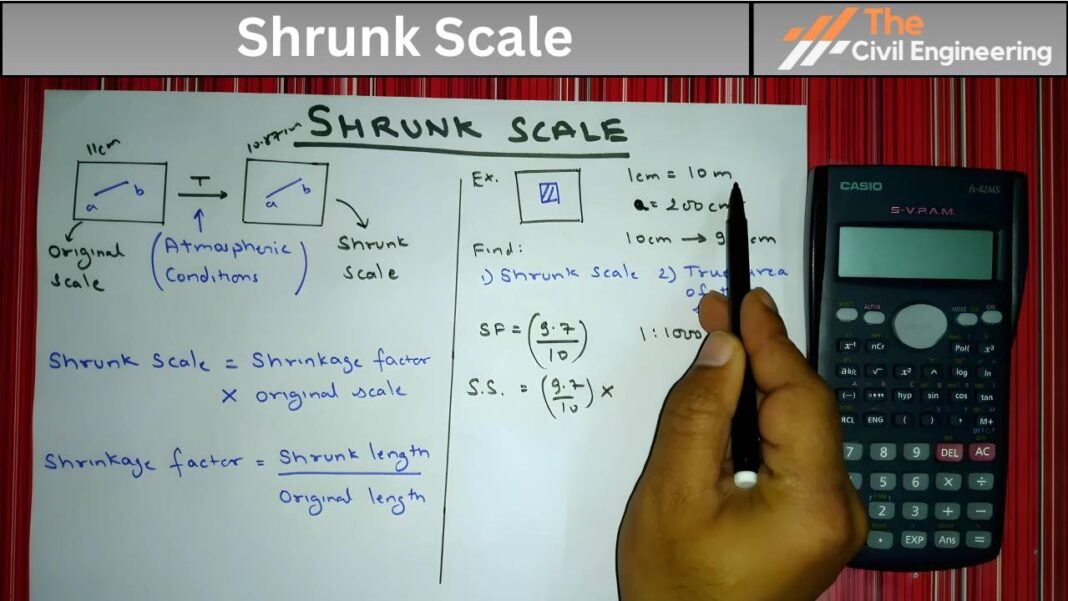1. What is the scale?
The scale is the fixed ratio that every distance on the plan bears with the corresponding distance on the ground.
E.g:
1cm : 100 m -> 100 m in field depicts 1 cm in map or drawing.
Image size: Object Size
Always remember that the first number depicts image size and another number depicts object size.
2. What is Shrunk Scale?
The product of the shrinkage factor and original scale is known as shrunk scale.
Mathematically,
Shrunk scale = Shrinkage Factor × Original Scale

If a graphical scale is not drawn on the plan and the sheet on which the plan is drawn shrinks due to variations in atmospheric conditions, it becomes essential to find the shrunk scale of the plan.
3. Importance of Shrunk Scale
The importance of shrunk scale is as follows:
a. To determine the correct scale of the shrunk map.
b. To reduce the error generated due to the shrinkage of the map.
c. To know the true area of the map in the field.
4. What is the Shrinkage Factor?
The distance between any two known points on the plan can be compared with the actual distance between the two points.
The shrinkage ratio or shrinkage factor is then equal to the ratio of the shrunk length to the actual length.
Shrinkage Factor = Shrunk length / Actual length
5. Example
If the shrinkage factor is equal to 15/16 and if the original scale is 1:1500,
The shrunk scale will have R.F = 15/16 × 1/1500 = 1/1600 [i.e. 1cm = 16m]
6. Numerical
Q. The area of the plan of an old survey plotted to a scale of 10 meters to 1 cm measures now as 100.2 sq. cm as found by a planimeter. The plan is found to have shrunk so that a line originally 10 cm long now measures 9.7 cm only. Find the shrunk scale and true area of the survey.
Solution,
Shrunk length = 9.7 cm
Actual length = 10 cm
Shrinkage Factor = Shrunk length / Actual length
Shrinkage factor = 9.7/10
True Scale R.F = 1/1000
[ 1cm = 100m, 1/1000]
Shrunk Scale = Shrinkage Factor × Original Scale
Shrinkage Scale = 9.7/10 × 1/1000 = 1/1030.92
Shrunk Area = 100.2 sq. cm
True Area = (R.F of the wrong scale / R.F of correct scale)² × Calculated area
[ R.F of true scale = 1/1030.92, R.F of wrong scale = 1/1000, Calculated area = 100.2 sq.cm]
True area = {(1/1000) / (1/1030.92)}² × 100.2
True area = 106.492 sq. cm
Area of the survey in the field,
Through the true area,
= 106.492 × 10 × 10 = 10649.21 sq.m
[ 1 cm = 10 m]
Through the shrunk area,
= 100.2 × 10.3092 × 10.3092 = 10649.21 sq.m
[ 1/1030.92, 1cm = 10.3092m]
Read Also: Preliminary Estimate, Numericals

